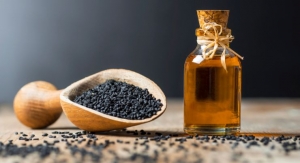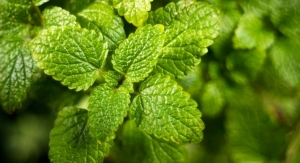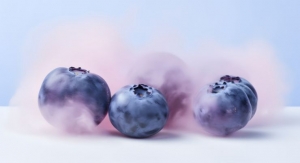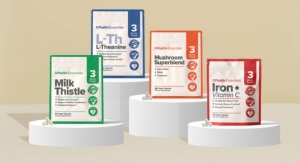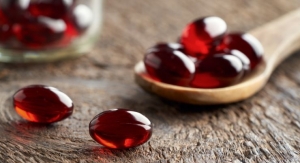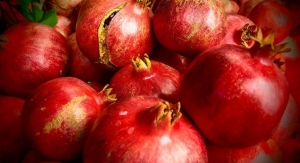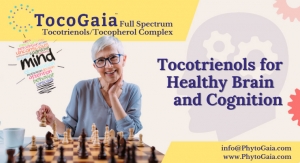Paul Gross03.01.09
Branding of nutraceuticals and other natural products like superfruit juices with antioxidant content infers that polyphenol pigments-flavonoids, anthocyanins, ellagitannins, catechins, proanthocyanidins and others with antioxidant activity in vitro-provide health benefits. However, such marketing defies scientific knowledge because there is no physiological evidence that polyphenols have any such action in humans.
In July 2008, FDA republished guidance for industry using antioxidant claims, with the terms specified for the regulation of product labels and marketing literature pertaining to antioxidants.
Stated with the release, FDA declared: "This guidance document restates in plain language the legal requirements set forth in 21 CFR 101.54(f) and (g) and 21 CFR 101.60(c)(1)(iii)(A) concerning dietary supplement use of certain nutrient content claims. This regulation is binding and has the full force and effect of law."
Yes. "A claim that describes the level of antioxidant nutrients present in a food is a nutrient content claim and may be used on the label or in the labeling of a food when the conditions of use in the regulation are met (21 CFR 101.54(g))."
In legal context, this quote is an excerpt from Title 21: Food and Drug Administration, Part 101-Food Labeling, Subpart D-Specific Requirements for Nutrient Content Claims. This term defines an "antioxidant" phytochemical as a nutrient only if physiological evidence exists to verify such a qualification. How�ever, as only dietary vitamins A, C and E are verified as physiological antioxidant nutrients, just these vitamins-not polyphenols-qualify for an antioxidant nutrient claim.
No. "An antioxidant nutrient content claim can only be made for nutrients for which there is an RDI established in 21 CFR 101.9 (21 CFR 101.54(g)(1))."
Demonstrating a Reference Dietary Intake level requires substantial physiological evidence for a role of the candidate compound as an actual nutrient with proven health values to humans. This is established only for vitamins A, C and E as dietary antioxidants in vivo. If a natural health product marketed as an antioxidant does not show good to excellent levels (10-20% DV) of vitamin A, C or E, then the product cannot be branded as an antioxidant.
Since no evidence exists for plant-derived polyphenols having such qualification, it is unlawful to state or infer that polyphenols in natural health products furnish antioxidant benefits. Products containing only polyphenols and branded as having high antioxidant content mislead the public into believing such products provide antioxidant benefit where no such action has been physiologically proven.
No. "The nutrient that is the subject of the claim must have recognized antioxidant activity. That is, there must be scientific evidence that after it is eaten and absorbed from the gastrointestinal tract, the substance participates in physiological, biochemical or cellular processes that inactivate free radicals or prevent free radical-initiated chemical reactions (21 CFR 101.54(g)(2))."
The terms of the regulatory document are especially restrictive for excluding polyphenols as physiological antioxidants because:
1. It is unlikely that polyphenols survive the gastric acid-enzyme environment of the stomach in the same chemical form as in the product or natural fruit.
2. Polyphenols do not have a biochemically confirmed mechanism of action or participation in any biological processes in vivo.
3. Polyphenols have not been proven in physiological studies to inactivate free radicals or block radical-initiated events.
"The names of the nutrients that are the antioxidants must appear in the claim. For example, 'high in antioxidant vitamins C and E.'
"Alternatively, when used as part of a nutrient content claim, the term 'antioxidant' or 'antioxidants' (such as "high in antioxidants"), may be linked by a symbol (such as an asterisk) that refers to the same symbol that appears elsewhere on the same panel of a product label followed by the name or names of the nutrients with the recognized antioxidant activity."
This term further defines the role of-and frankly, it absolutely excludes-polyphenols in branded products or mentioned on a product label as antioxidants.
Branding a product as an 'antioxidant' 1) implies the product or extract has substantiated science proving its physiological activity; 2) may deceptively persuade consumers to buy such a product expecting a health benefit; and 3) promotes an 'antioxidant' product as beneficial to consumer health.
As no physiological evidence exists for polyphenol antioxidant activity, it is contrary to FDA regulations and law when manufacturers brand products as antioxidants unless sufficient scientific evidence exists to confirm nutrient status.
As summarized later in this report by Drs. Balz Frei, James Joseph and colleagues, molecules like polyphenols-assumed to be physiological anti�oxidants-may actually serve roles apart from antioxidant functions. Included may be modification of on-off switches for enzymes, facilitation of receptor binding as a selective ligand or mimic, or cell-cell signaling at concentrations lower than anticipated for antioxidant activity.
Polyphenols actually are known to facilitate synthesis of glutathione, the most prevalent endogenous antioxidant, so they could play a role in increasing content of antioxidant molecules already present in the body.
In conclusion, emphasis of polyphenols as physiological antioxidant ingredients in superfruit or other natural health products is scientifically baseless, deceptive and unlawful by promoting unproved antioxidant health benefits that may induce consumer purchases.
Flavonoids represent a family of some 5000 plant compounds having common chemical structures called polyphenols. Fla�vonoids can be divided into che�mi�cally-related subclasses of polyphenols called isoflavones (found in soy products), flavanones (such as naringenin from citrus fruits), flavanols (e.g., catechins from tea or cocoa), flavonols (e.g., quercetin from many fruits and vegetables) and anthocyanidins (from berries and grapes).
Following ingestion, flavonoids are likely to undergo a change in chemical structure during exposure to stomach acids and enzymes. Flavonoids are poorly absorbed into blood and rapidly eliminated from the body; thus, flavonoids have low eventual biological availability or 'bioavailability'-the fraction of ingested substance reaching target organs. Bioavailability is only about 10% of total intake for flavonoids like soy isoflavones and citrus flavonones, while it is even lower (about 2% of total intake) for most other flavonoids, including anthocyanidins, catechins and quercetin. Unfortunately, many test tube experiments published in the scientific literature showing strong antioxidant activity of flavonoids have used very high, unphysiological concentrations and parent chemical structures (rather than metabolites) of flavonoids. When these results are conveyed to the public, a misunderstanding may occur about the actual biological significance of flavonoids, leading consumers to believe incorrectly that flavonoids have important antioxidant value.
1) Minimal or no direct antioxidant activity. Flavonoids have antioxidant activity in test tube experiments because they effectively scavenge free radicals. However, in the human body, flavonoids are not effective antioxidants because, even with high levels of dietary intake, cellular flavonoid concentrations are 100-1000 times lower than concentrations of other important cellular antioxidants, including vitamins C and E, uric acid and glutathione. Moreover, flavonoid metabolites often have even lower antioxidant activity than their parent flavonoids. For these reasons, the relative contribution of dietary flavonoids to antioxidant function in the body is likely very small and physiologically negligible.
2) Potential estrogenic and anti-estrogenic activities. Soy isoflavones are referred to as "phytoestrogens"-plant-derived compounds that exert estrogen-like effects rather than antioxidant functions. Estrogen is a hormone that binds to estrogen receptors located in bone, liver, heart, brain and reproductive tissue. Soy isoflavones can either mimic the effects of estrogen in some tissues or block its effects in others. Estrogenic effects in various tissues could help maintain bone density and improve cholesterol levels, while anti-estrogenic effects in reproductive tissue could potentially decrease the risk of hormone-associated cancers (e.g., breast, uterine and prostate cancers).
3) Potential effects on cell-signaling pathways. Cells can respond to a variety of stresses or signals by increasing or decreasing activity of "cell-signaling pathways" (also called "signal transduction pathways"). These pathways regulate many processes, including cell growth, cell proliferation and removal of damaged cells (programmed cell death or "apoptosis"). Although it was originally assumed that flavonoids exert antioxidant effects in the body, it has become increasingly clear that instead they modulate cell-signaling pathways.
Inside cells, the concentration of flavonoids needed to affect cell-signaling mechanisms is much lower than that needed to affect cellular antioxidant capacity, so this evidence is consistent with the low flavonoid concentrations kept in the body. The results of many laboratory experiments suggest that flavonoids may selectively inhibit a group of cell-signaling enzymes called kinases, which are important in maintaining normal cell function. Increased activity of these kinases appears to be responsible for the start of various chronic diseases; flavonoids may selectively inhibit kinases, thereby lowering chronic disease risk.
In most of the following examples, flavonoids in their native chemical structure and in relatively high concentrations were applied directly into the experimental preparation (did not pass through the stomach). The results indicate that changes in cell signaling by flavonoids could help prevent cancer by:
� Increasing levels of detoxification enzymes: Detoxification enzymes carry out reactions that help excrete potentially toxic or carcinogenic (cancer-causing) compounds.
� Preserving normal cell cycle regulation: The "cell cycle" is the sequence of events involving growth, replication and division of a cell. If DNA damage occurs, the cell cycle can be transiently arrested in order for the DNA to be repaired-or if the damage is irreparable-for activation of pathways leading to removal of the damaged cell. Cancer may develop if DNA mutations are propagated, for instance, in the case of defective cell cycle regulation. Flavonoids appear to maintain normal cell cycle.
� Inhibiting proliferation and inducing programmed cell death (apoptosis): In contrast to normal cells, cancer cells proliferate rapidly and cannot respond to cell signals that initiate apoptosis. Flavonoids stimulate apoptosis in isolated cancer cells, so they may be important as dietary agents combating cancer.
� Inhibiting tumor invasion and angiogenesis: With the aid of enzymes called matrix-metalloproteinases, cancer cells invade normal tissue. Angiogenesis-the development of new blood vessels-is necessary for the growth of invasive, cancerous tumors. Flavonoids appear to act against both the invasion process and angiogenesis.
� Decreasing inflammation: Inflammation can result in increased production of free radicals by inflammatory enzymes, as well as the release of inflammatory mediators that promote cell proliferation and angiogenesis and inhibit apoptosis. In test tube studies, flavonoids act against inflammatory mechanisms.
� Decreasing inflammation: Atherosclerosis is now recognized as an inflammatory disease of the arterial wall. Accordingly, several markers of inflammation-such as C-reactive protein (CRP)-have been associated with increased risk of heart attacks and strokes. In test tube experiments and in preliminary studies with animals and humans, there is evidence that dietary flavonoids may lower CRP and inhibit atherosclerosis resulting from inflammation of the arterial wall.
� Decreasing vascular endothelial cell adhesion: Early in the development of atherosclerosis, inflammatory white blood cells are recruited from the blood to the arterial wall. This event is dependent on so-called adhesion molecules produced by vascular endothelial cells that line the inner walls of blood vessels. This process is inhibited by flavonoids.
� Increasing endothelial nitric oxide production: An enzyme called eNOS produces the chemical nitric oxide, which is needed to maintain normal blood vessel relaxation (vasodilation). Impaired nitric oxide-dependent vasodilation is linked to an increased risk of cardiovascular diseases. Nitric oxide also may reduce inflammation and inhibit smooth muscle cell proliferation, important factors in atherosclerosis. Dietary flavonoids (from tea or cocoa) may increase eNOS activity by binding to estrogen receptors (above) and stimulating cell-signaling pathways that activate eNOS.
� Decreasing platelet aggregation: Platelet aggregation is one of the first steps in the formation of a blood clot that can occlude a coronary or cerebral artery, leading to a heart attack or stroke, respectively. Thus, inhibiting platelet aggregation-an action that flavonoids appear to have-is important in the prevention of cardiovascular diseases.
In summary, dietary flavonoids cannot be significant antioxidants in humans, but they may affect a variety of cell-signaling pathways, possibly influencing the onset and progression of cancer or cardiovascular diseases.
Dietary polyphenols have been shown to delay and even reverse age-related cognitive decline in laboratory animals via mechanisms associated with antioxidant mechanisms. However, dietary supplementation with blueberries and strawberries in rats also induces brain changes not strictly involving antioxidant actions.
Oxidative damage occurs when oxygen radicals produced as a byproduct of normal metabolism accumulate from over-production or decreased capacity of cells to neutralize free radicals.
During aging, neuronal failure to process and complete motor skills occurs in brain structures-e.g., hippocampus, striatum and cerebellum-and may result from oxidative damage to proteins, membrane lipids and enzymes involved in neuron survival and communication. Neurons in the aged brain fail to regulate intracellular ion concentrations, leading to deficits in cell communication. Aging also causes activation of brain support cells called glia, possibly worsening neuron damage by release of toxic cell chemicals.
Blueberries and other dark fruits are known for their polyphenolic chemicals, particularly anthocyanins, in skin and pulp. Dietary anthocyanins improve cognitive performance and cell changes in the hippocampus of rats. When considering brain uptake, dietary compounds must not only pass through the digestive system and enter the blood, but must also cross the blood-brain barrier to access neural tissue. Following chronic supplementation with blueberries in rats, anthocyanins locate in the hippocampus and cortex, indicating they must have passed through the blood-brain barrier.
Due to their beneficial effects on age-related cognitive decline and accumulation in brain structures involved in learning and memory, polyphenols may act directly on brain cells. They may have a variety of effects on the aging brain, including changes in gene expression, signaling molecule activity, and neuron survival mechanisms.
Blueberry polyphenols appear to directly affect neuronal processes such as survival mechanisms and intracellular signals. Exposure of hippocampal cells in culture to different stressors, like dopamine or beta-amyloid protein of Alzheimer's disease, decreases ability of neurons to control levels of calcium, leading to cell death. When hippocampal cells were treated with blueberry extracts, ability to control cell calcium was restored.
In other rat studies, blueberry consumption reversed stress-induced alterations in cell signaling molecules in the hippocampus and induced activation of a multi-functional transcription factor required for long-term memory. This activation was associated with increased expression of a growth factor called "brain-derived neurotrophic factor" involved in brain aging, stress responses and signaling molecules involved in cell survival.
These studies clarify a new concept that berry polyphenols, although possibly being antioxidants in the aged brain, also affect brain aging processes. Potential mechanisms involved include changes in 1) gene expression, 2) signaling activity, 3) brain cell survival mechanisms and 4) calcium ion transport in and out of cells.
As examples, studies show that oxidative and inflammatory stressors activate signaling molecules within neurons. Several critical elements that may lead to cell protection from these stressors include enzymes and growth factors involved in cell survival and protection. Recent research has shown that dietary blueberry polyphenols protect hippocampal neurons from low-oxygen stress and enhance protection and growth of brain cells.
Importantly, in rat experiments, a signaling molecule enzyme was involved in memory of fear conditions, learning and "place" memory. One other signaling enzyme, protein kinase C (PKC), regulated synapse responses and memory mechanisms. PKC activity may be important in memory formation, particularly memory of place and learning. A blueberry diet in rats stimulates genes associated with cell survival, including one involved in cell-to-cell communication.
In conclusion, an antioxidant explanation for dietary effects of berries on brain cells and behavior involves only a small probable benefit. Others possibly include cell protection, reduced cell responses to inflammatory stimuli, and increased ability for brain cells to communicate.
References furnished upon request.
In July 2008, FDA republished guidance for industry using antioxidant claims, with the terms specified for the regulation of product labels and marketing literature pertaining to antioxidants.
Stated with the release, FDA declared: "This guidance document restates in plain language the legal requirements set forth in 21 CFR 101.54(f) and (g) and 21 CFR 101.60(c)(1)(iii)(A) concerning dietary supplement use of certain nutrient content claims. This regulation is binding and has the full force and effect of law."
Is an antioxidant claim a nutrient content claim?
Yes. "A claim that describes the level of antioxidant nutrients present in a food is a nutrient content claim and may be used on the label or in the labeling of a food when the conditions of use in the regulation are met (21 CFR 101.54(g))."
In legal context, this quote is an excerpt from Title 21: Food and Drug Administration, Part 101-Food Labeling, Subpart D-Specific Requirements for Nutrient Content Claims. This term defines an "antioxidant" phytochemical as a nutrient only if physiological evidence exists to verify such a qualification. How�ever, as only dietary vitamins A, C and E are verified as physiological antioxidant nutrients, just these vitamins-not polyphenols-qualify for an antioxidant nutrient claim.
Can I make an antioxidant nutrient content claim for any ingredient in a food?
No. "An antioxidant nutrient content claim can only be made for nutrients for which there is an RDI established in 21 CFR 101.9 (21 CFR 101.54(g)(1))."
Demonstrating a Reference Dietary Intake level requires substantial physiological evidence for a role of the candidate compound as an actual nutrient with proven health values to humans. This is established only for vitamins A, C and E as dietary antioxidants in vivo. If a natural health product marketed as an antioxidant does not show good to excellent levels (10-20% DV) of vitamin A, C or E, then the product cannot be branded as an antioxidant.
Since no evidence exists for plant-derived polyphenols having such qualification, it is unlawful to state or infer that polyphenols in natural health products furnish antioxidant benefits. Products containing only polyphenols and branded as having high antioxidant content mislead the public into believing such products provide antioxidant benefit where no such action has been physiologically proven.
Does the claim apply to all nutrients listed in 21 CFR 101.9?
No. "The nutrient that is the subject of the claim must have recognized antioxidant activity. That is, there must be scientific evidence that after it is eaten and absorbed from the gastrointestinal tract, the substance participates in physiological, biochemical or cellular processes that inactivate free radicals or prevent free radical-initiated chemical reactions (21 CFR 101.54(g)(2))."
The terms of the regulatory document are especially restrictive for excluding polyphenols as physiological antioxidants because:
1. It is unlikely that polyphenols survive the gastric acid-enzyme environment of the stomach in the same chemical form as in the product or natural fruit.
2. Polyphenols do not have a biochemically confirmed mechanism of action or participation in any biological processes in vivo.
3. Polyphenols have not been proven in physiological studies to inactivate free radicals or block radical-initiated events.
Does the label claim have to include the name of the nutrient that is an antioxidant, or can the claim simply say "antioxidants?"
"The names of the nutrients that are the antioxidants must appear in the claim. For example, 'high in antioxidant vitamins C and E.'
"Alternatively, when used as part of a nutrient content claim, the term 'antioxidant' or 'antioxidants' (such as "high in antioxidants"), may be linked by a symbol (such as an asterisk) that refers to the same symbol that appears elsewhere on the same panel of a product label followed by the name or names of the nutrients with the recognized antioxidant activity."
This term further defines the role of-and frankly, it absolutely excludes-polyphenols in branded products or mentioned on a product label as antioxidants.
Branding a product as an 'antioxidant' 1) implies the product or extract has substantiated science proving its physiological activity; 2) may deceptively persuade consumers to buy such a product expecting a health benefit; and 3) promotes an 'antioxidant' product as beneficial to consumer health.
As no physiological evidence exists for polyphenol antioxidant activity, it is contrary to FDA regulations and law when manufacturers brand products as antioxidants unless sufficient scientific evidence exists to confirm nutrient status.
As summarized later in this report by Drs. Balz Frei, James Joseph and colleagues, molecules like polyphenols-assumed to be physiological anti�oxidants-may actually serve roles apart from antioxidant functions. Included may be modification of on-off switches for enzymes, facilitation of receptor binding as a selective ligand or mimic, or cell-cell signaling at concentrations lower than anticipated for antioxidant activity.
Polyphenols actually are known to facilitate synthesis of glutathione, the most prevalent endogenous antioxidant, so they could play a role in increasing content of antioxidant molecules already present in the body.
In conclusion, emphasis of polyphenols as physiological antioxidant ingredients in superfruit or other natural health products is scientifically baseless, deceptive and unlawful by promoting unproved antioxidant health benefits that may induce consumer purchases.
Non-Antioxidant Roles for Dietary Flavonoids: Reviewing the relevance to cancer and cardiovascular diseases.
By Jane Higdon, PhD, Victoria Drake, PhD & Balz Frei, PhD
Linus Pauling Institute
Oregon State University
Flavonoids represent a family of some 5000 plant compounds having common chemical structures called polyphenols. Fla�vonoids can be divided into che�mi�cally-related subclasses of polyphenols called isoflavones (found in soy products), flavanones (such as naringenin from citrus fruits), flavanols (e.g., catechins from tea or cocoa), flavonols (e.g., quercetin from many fruits and vegetables) and anthocyanidins (from berries and grapes).
Following ingestion, flavonoids are likely to undergo a change in chemical structure during exposure to stomach acids and enzymes. Flavonoids are poorly absorbed into blood and rapidly eliminated from the body; thus, flavonoids have low eventual biological availability or 'bioavailability'-the fraction of ingested substance reaching target organs. Bioavailability is only about 10% of total intake for flavonoids like soy isoflavones and citrus flavonones, while it is even lower (about 2% of total intake) for most other flavonoids, including anthocyanidins, catechins and quercetin. Unfortunately, many test tube experiments published in the scientific literature showing strong antioxidant activity of flavonoids have used very high, unphysiological concentrations and parent chemical structures (rather than metabolites) of flavonoids. When these results are conveyed to the public, a misunderstanding may occur about the actual biological significance of flavonoids, leading consumers to believe incorrectly that flavonoids have important antioxidant value.
What follows is a summary of possible actions of dietary flavonoids in human physiology.
1) Minimal or no direct antioxidant activity. Flavonoids have antioxidant activity in test tube experiments because they effectively scavenge free radicals. However, in the human body, flavonoids are not effective antioxidants because, even with high levels of dietary intake, cellular flavonoid concentrations are 100-1000 times lower than concentrations of other important cellular antioxidants, including vitamins C and E, uric acid and glutathione. Moreover, flavonoid metabolites often have even lower antioxidant activity than their parent flavonoids. For these reasons, the relative contribution of dietary flavonoids to antioxidant function in the body is likely very small and physiologically negligible.
2) Potential estrogenic and anti-estrogenic activities. Soy isoflavones are referred to as "phytoestrogens"-plant-derived compounds that exert estrogen-like effects rather than antioxidant functions. Estrogen is a hormone that binds to estrogen receptors located in bone, liver, heart, brain and reproductive tissue. Soy isoflavones can either mimic the effects of estrogen in some tissues or block its effects in others. Estrogenic effects in various tissues could help maintain bone density and improve cholesterol levels, while anti-estrogenic effects in reproductive tissue could potentially decrease the risk of hormone-associated cancers (e.g., breast, uterine and prostate cancers).
3) Potential effects on cell-signaling pathways. Cells can respond to a variety of stresses or signals by increasing or decreasing activity of "cell-signaling pathways" (also called "signal transduction pathways"). These pathways regulate many processes, including cell growth, cell proliferation and removal of damaged cells (programmed cell death or "apoptosis"). Although it was originally assumed that flavonoids exert antioxidant effects in the body, it has become increasingly clear that instead they modulate cell-signaling pathways.
Inside cells, the concentration of flavonoids needed to affect cell-signaling mechanisms is much lower than that needed to affect cellular antioxidant capacity, so this evidence is consistent with the low flavonoid concentrations kept in the body. The results of many laboratory experiments suggest that flavonoids may selectively inhibit a group of cell-signaling enzymes called kinases, which are important in maintaining normal cell function. Increased activity of these kinases appears to be responsible for the start of various chronic diseases; flavonoids may selectively inhibit kinases, thereby lowering chronic disease risk.
In most of the following examples, flavonoids in their native chemical structure and in relatively high concentrations were applied directly into the experimental preparation (did not pass through the stomach). The results indicate that changes in cell signaling by flavonoids could help prevent cancer by:
� Increasing levels of detoxification enzymes: Detoxification enzymes carry out reactions that help excrete potentially toxic or carcinogenic (cancer-causing) compounds.
� Preserving normal cell cycle regulation: The "cell cycle" is the sequence of events involving growth, replication and division of a cell. If DNA damage occurs, the cell cycle can be transiently arrested in order for the DNA to be repaired-or if the damage is irreparable-for activation of pathways leading to removal of the damaged cell. Cancer may develop if DNA mutations are propagated, for instance, in the case of defective cell cycle regulation. Flavonoids appear to maintain normal cell cycle.
� Inhibiting proliferation and inducing programmed cell death (apoptosis): In contrast to normal cells, cancer cells proliferate rapidly and cannot respond to cell signals that initiate apoptosis. Flavonoids stimulate apoptosis in isolated cancer cells, so they may be important as dietary agents combating cancer.
� Inhibiting tumor invasion and angiogenesis: With the aid of enzymes called matrix-metalloproteinases, cancer cells invade normal tissue. Angiogenesis-the development of new blood vessels-is necessary for the growth of invasive, cancerous tumors. Flavonoids appear to act against both the invasion process and angiogenesis.
� Decreasing inflammation: Inflammation can result in increased production of free radicals by inflammatory enzymes, as well as the release of inflammatory mediators that promote cell proliferation and angiogenesis and inhibit apoptosis. In test tube studies, flavonoids act against inflammatory mechanisms.
Modulation of cell-signaling pathways by flavonoids could help prevent cardiovascular diseases (mainly heart attacks and strokes) by:
� Decreasing inflammation: Atherosclerosis is now recognized as an inflammatory disease of the arterial wall. Accordingly, several markers of inflammation-such as C-reactive protein (CRP)-have been associated with increased risk of heart attacks and strokes. In test tube experiments and in preliminary studies with animals and humans, there is evidence that dietary flavonoids may lower CRP and inhibit atherosclerosis resulting from inflammation of the arterial wall.
� Decreasing vascular endothelial cell adhesion: Early in the development of atherosclerosis, inflammatory white blood cells are recruited from the blood to the arterial wall. This event is dependent on so-called adhesion molecules produced by vascular endothelial cells that line the inner walls of blood vessels. This process is inhibited by flavonoids.
� Increasing endothelial nitric oxide production: An enzyme called eNOS produces the chemical nitric oxide, which is needed to maintain normal blood vessel relaxation (vasodilation). Impaired nitric oxide-dependent vasodilation is linked to an increased risk of cardiovascular diseases. Nitric oxide also may reduce inflammation and inhibit smooth muscle cell proliferation, important factors in atherosclerosis. Dietary flavonoids (from tea or cocoa) may increase eNOS activity by binding to estrogen receptors (above) and stimulating cell-signaling pathways that activate eNOS.
� Decreasing platelet aggregation: Platelet aggregation is one of the first steps in the formation of a blood clot that can occlude a coronary or cerebral artery, leading to a heart attack or stroke, respectively. Thus, inhibiting platelet aggregation-an action that flavonoids appear to have-is important in the prevention of cardiovascular diseases.
In summary, dietary flavonoids cannot be significant antioxidants in humans, but they may affect a variety of cell-signaling pathways, possibly influencing the onset and progression of cancer or cardiovascular diseases.
Berry Polyphenols: Exploring non-antioxidant theory and potential mechanisms of brain aging.
By James Joseph, PhD, Barbara Shukitt-Hale, PhD & Lauren Willis, PhD
USDA-Agricultural Research Service
Human Nutrition Research Center on Aging at Tufts University
Dietary polyphenols have been shown to delay and even reverse age-related cognitive decline in laboratory animals via mechanisms associated with antioxidant mechanisms. However, dietary supplementation with blueberries and strawberries in rats also induces brain changes not strictly involving antioxidant actions.
Oxidative damage occurs when oxygen radicals produced as a byproduct of normal metabolism accumulate from over-production or decreased capacity of cells to neutralize free radicals.
During aging, neuronal failure to process and complete motor skills occurs in brain structures-e.g., hippocampus, striatum and cerebellum-and may result from oxidative damage to proteins, membrane lipids and enzymes involved in neuron survival and communication. Neurons in the aged brain fail to regulate intracellular ion concentrations, leading to deficits in cell communication. Aging also causes activation of brain support cells called glia, possibly worsening neuron damage by release of toxic cell chemicals.
Brain Actions of Polyphenols In Vivo
Blueberries and other dark fruits are known for their polyphenolic chemicals, particularly anthocyanins, in skin and pulp. Dietary anthocyanins improve cognitive performance and cell changes in the hippocampus of rats. When considering brain uptake, dietary compounds must not only pass through the digestive system and enter the blood, but must also cross the blood-brain barrier to access neural tissue. Following chronic supplementation with blueberries in rats, anthocyanins locate in the hippocampus and cortex, indicating they must have passed through the blood-brain barrier.
Due to their beneficial effects on age-related cognitive decline and accumulation in brain structures involved in learning and memory, polyphenols may act directly on brain cells. They may have a variety of effects on the aging brain, including changes in gene expression, signaling molecule activity, and neuron survival mechanisms.
Blueberry polyphenols appear to directly affect neuronal processes such as survival mechanisms and intracellular signals. Exposure of hippocampal cells in culture to different stressors, like dopamine or beta-amyloid protein of Alzheimer's disease, decreases ability of neurons to control levels of calcium, leading to cell death. When hippocampal cells were treated with blueberry extracts, ability to control cell calcium was restored.
Possible Molecular Actions of Polyphenols in the Brain
In other rat studies, blueberry consumption reversed stress-induced alterations in cell signaling molecules in the hippocampus and induced activation of a multi-functional transcription factor required for long-term memory. This activation was associated with increased expression of a growth factor called "brain-derived neurotrophic factor" involved in brain aging, stress responses and signaling molecules involved in cell survival.
These studies clarify a new concept that berry polyphenols, although possibly being antioxidants in the aged brain, also affect brain aging processes. Potential mechanisms involved include changes in 1) gene expression, 2) signaling activity, 3) brain cell survival mechanisms and 4) calcium ion transport in and out of cells.
As examples, studies show that oxidative and inflammatory stressors activate signaling molecules within neurons. Several critical elements that may lead to cell protection from these stressors include enzymes and growth factors involved in cell survival and protection. Recent research has shown that dietary blueberry polyphenols protect hippocampal neurons from low-oxygen stress and enhance protection and growth of brain cells.
Importantly, in rat experiments, a signaling molecule enzyme was involved in memory of fear conditions, learning and "place" memory. One other signaling enzyme, protein kinase C (PKC), regulated synapse responses and memory mechanisms. PKC activity may be important in memory formation, particularly memory of place and learning. A blueberry diet in rats stimulates genes associated with cell survival, including one involved in cell-to-cell communication.
In conclusion, an antioxidant explanation for dietary effects of berries on brain cells and behavior involves only a small probable benefit. Others possibly include cell protection, reduced cell responses to inflammatory stimuli, and increased ability for brain cells to communicate.
References furnished upon request.



